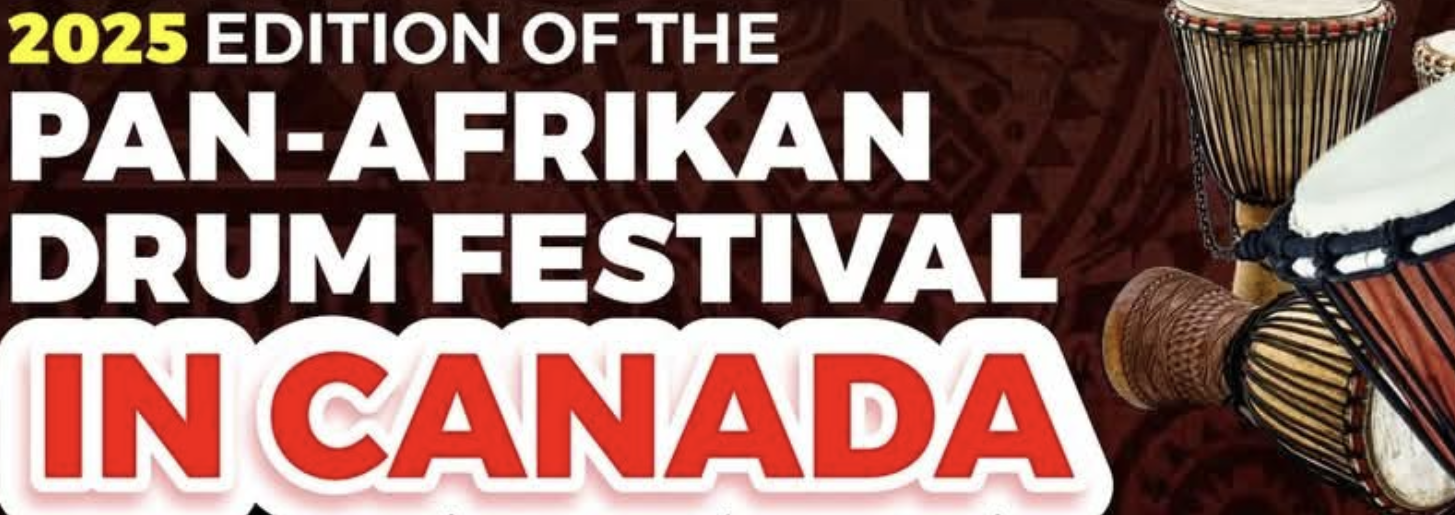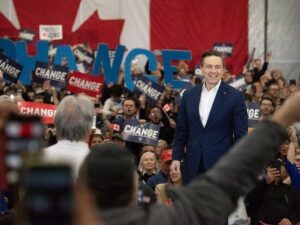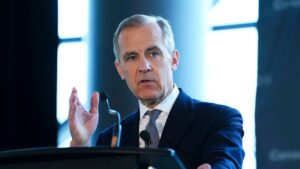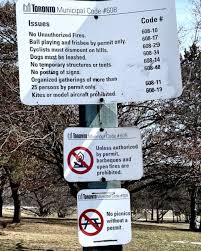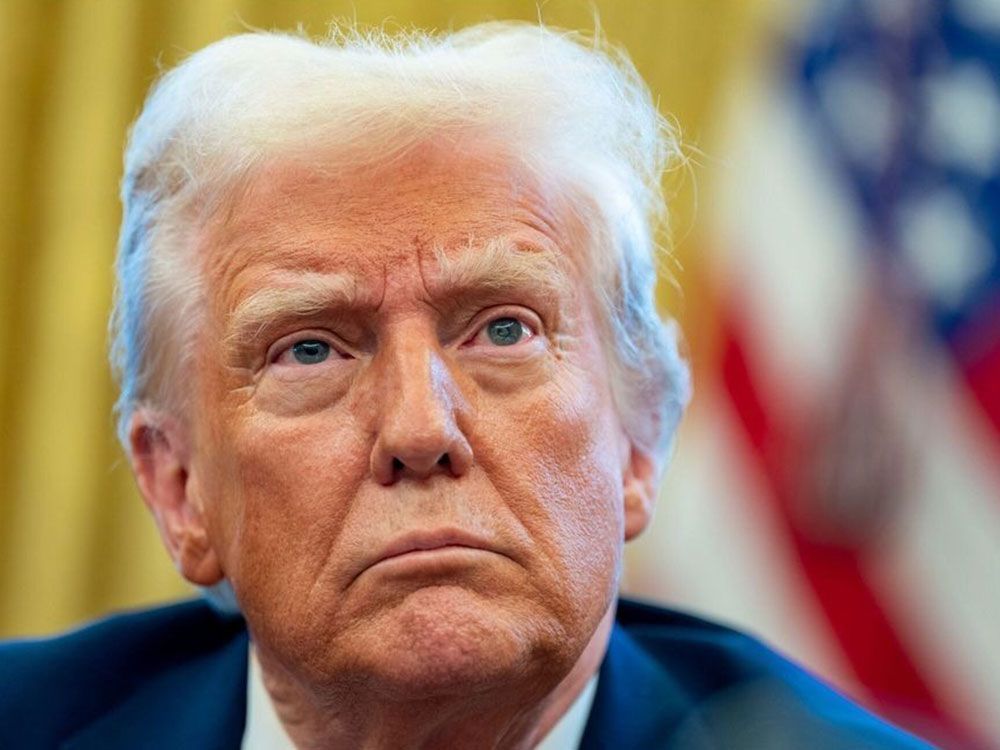
United States President Donald Trump said he would announce a plan to enact reciprocal tariffs on Thursday.
U.S. president Donald Trump signed a memorandum Thursday calling for reciprocal trade tariffs on all major trading partners.
“I have decided for purposes of fairness that I will charge a reciprocal tariff. Meaning whatever countries charge the United States of America we will charge them, no more no less,” Trump said as he signed the executive order, dubbed the “Fair and Reciprocal Plan,” on Thursday.
“In almost all cases, they are charging us vastly more than what we charge them, but those days are over,” he said.
So, what are reciprocal tariffs exactly? Which countries are they likely to target, and will Canada be among them? Here’s what you need to know about Trump’s latest economic curve ball.
Fen Osler Hampson, professor of international affairs at Carleton University and co-chair of the Expert Group on Canada-U.S. Relations, compared reciprocal tariffs to biblical justice: “An eye for an eye, a tooth for a tooth.”
For example, if Europe had a 10 per cent tariff on American imports and the U.S. had a three per cent tariff on European imports, the U.S. would raise their tariffs to match Europe’s.
“If the Europeans decide to escalate, then (the U.S. will) escalate. If (Americans) decide to reduce, (Europeans) will reduce,” Hampson explained. “So, it’s pretty simple, it’s tit for tat.”
A White House official said Trump’s trade and economic team will be studying America’s tariff and trade relationships, starting with the countries that have the highest trade surpluses and tariff rates, according to the Associated Press.
The official said the team will be identifying and factoring in other countries’ tariff rates, subsidies to industries, regulations, potential undervaluing of currencies and value added taxes (which are similar to sales taxes and common in the European Union) in their reciprocal tariff calculations.
Howard Lutnick, Trump’s nominee to lead the Commerce Department, informed reporters all studies should be complete by April 1.
While the White House official said Trump’s tariffs would match the higher levies charged by other countries, it’s still unclear whether this will be on a good-by-good basis or a blanket tariff on all products and services from that country.
“The other $64,000 question is, what does this mean for his earlier campaign commitment for across-the-board tariffs?” Hampson asked, explaining that reciprocal tariffs could compound existing or promised levies.
Trump also mentioned that there would be extra tariffs on cars, semiconductors and pharmaceuticals “over and above” the reciprocal tariffs to come later.
Deutsche Bank economists, led by Justin Weidner, estimated in a Monday note that the U.S.’ weighted average tariff rate could hit 4.8 per cent with reciprocal tariffs — a 3.3 per cent jump from the 1.5 per cent rate U.S. imports had in 2022, according to the World Bank.
Hampson said countries that have protectionist measures in place for their agriculture could be impacted the most. Typically, developing countries tend to impose higher tariffs in order to increase revenue and protect their domestic industries until they have the capacity to compete with more industrialized countries.
Hampson added there’s “no question” that India would take a big hit from reciprocal tariffs. In 2022, America’s average tariff rate on imports from India was three per cent, in comparison to India’s average tariff rate on American imports at 9.5 per cent.
Speaking to reporters in the White House, Trump criticized India’s high tariffs, highlighting the impact of levies on Harley-Davidson motorcycles in the past.
Still, Hampson noted reciprocal tariffs on India could have major repercussions if the U.S. is looking to make India a strategic trading partner against China. It’s possible that Trump’s meeting with Modi could lead to a trade agreement instead.
Lutnick also told reporters reciprocal tariffs are “a two-way street,” meaning if other countries slash their tariffs or remove their trade barriers, the U.S. could lower its tariffs as well.
However, the bottom line is that American consumers will bear the brunt of tariffs, Hampson warned. “(Trump) keeps using the tariff cudgel to try to beat America’s trading partners into submission,” he said, “But it’s a cudgel that is blunted by the effect of inflation.”
U.S. inflation is already up three per cent compared to last year’s numbers and economists are forecasting that tariffs could push prices up even further. “If the delayed Canada and Mexico tariffs were to ultimately go into effect as well, inflation in 2025 could be above 3.5 per cent,” Deutsche Bank economists said in their recent note.
Peterson Institute researchers have predicted that Trump’s threat of 25 per cent tariffs on most goods from Canada and Mexico (Canadian energy faces a 10 per cent tariff instead) and a 10 per cent increase in levies on Chinese imports could equate to a tax increase of more than $1,200 a year for the median American household.
Hampson believes Canada will not be impacted by reciprocal tariffs because of the free trade agreement, and went so far as to suggest that America’s raised levies against other countries could be to Canada’s advantage.
“The Americans are going to want to cut deals because it’s going to raise the price of everything very quickly,” he said. “Everyone’s going to feel a lot of pain here, but American consumers are going to feel it heavily, because the United States imports a lot (of goods).”
On Thursday, Trump repeated his desire to make Canada the 51st state, along with his criticism of the country’s defense spending, but he didn’t delve into whether reciprocal tariffs would impact their closest neighbour.
“Canada is going to be a very interesting situation because we just don’t need their products, and yet they survive off the fact that we do 95 per cent of what they do,” Trump told reporters.
U.S. President Donald Trump takes a question from a reporter after Tulsi Gabbard is sworn in as Director of National Intelligence in the Oval Office at the White House on February 12, 2025 in Washington, D.C.
25 per cent tariffs on steel and aluminum exports from other countries means that anything American manufacturers produce using these metals now becomes more expensive as well.
How will Trump’s tariffs on steel and aluminum impact Canada?
The White House subsequently released a fact sheet on Trump’s reciprocal tariffs plan, singling out Canada’s digital services tax, which it says collects over US$500 million from American companies.
“Reciprocal tariffs will bring back fairness and prosperity to the distorted international trade system and stop Americans from being taken advantage of,” the White House said.

